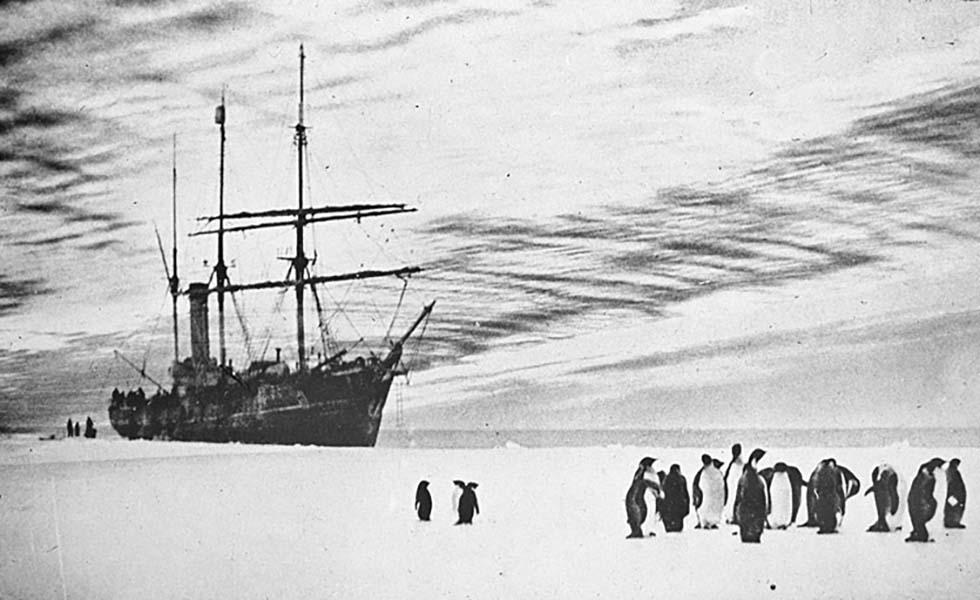
Australasian Antarctic Expedition 1911-1914
Aboriginal and Torres Strait Islander people should be aware that the National Archives' website and collection contain the names, images and voices of people who have died.
Some records include terms and views that are not appropriate today. They reflect the period in which they were created and are not the views of the National Archives.


Australasian Antarctic Expedition 1911-1914
This image shows the SY Aurora, a ship owned by the Australasian Antarctic Expedition, anchored at the Shackleton Ice Shelf in eastern Antarctica. The photograph was taken by Frank Hurley, the expedition’s official photographer.
Ships like the Aurora, with their strong wooden hulls, reinforced bows and reliable steam engines, were fundamental to Antarctic exploration at the time of the Australasian Antarctic Expedition. Classified as a steam yacht, the Aurora measured 50.3 by 9.3 by 5.7 metres and weighed 386 tonnes. Originally built as a sealer, it was bought by Mawson and refitted for the expedition in 1910.
Western Base, where this image was taken, was established by the expedition on the edge of the Shackleton Ice Shelf, about 2000 kilometres away from Main Base. 8 people were stationed there. They carried out valuable scientific work and charted large areas of the coastline.
The large Shackleton Ice Shelf was also explored and named by members of the expedition. Projecting seaward about 140 kilometres, it forms one boundary of a stretch of eastern Antarctic coast which they named Queen Mary Land after the wife of the reigning king, George V.
This photograph was taken by James Francis (Frank) Hurley. Hurley’s participation as the official photographer on the expedition earned him the reputation as a ground-breaking photographer and filmmaker.
Learning resource text © Education Services Australia Limited and the National Archives of Australia 2010.
Learn how to interpret primary sources, use our collection and more.
